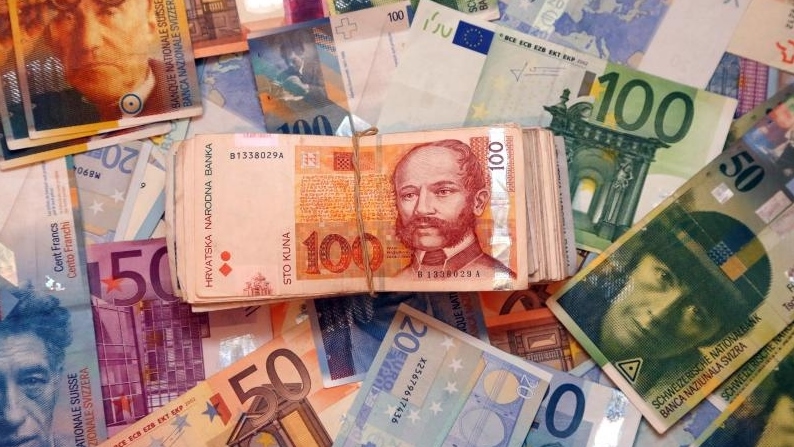
The total volume of household loans issued in Croatia reached 121.8 billion kuna (€16.4 billion) in June 2018, the highest level since January 2016, analysts from Raiffeisenbank Austria (RBA) said on Monday, commenting data published by the Croatian central bank (HNB).
The volume of household loans increased by 521 million kuna (€70.2 million), or 0.4 percent, in June 2018 on the month, and by 4.5 billion kuna (€606.7 million), or 3.9 percent, compared to June 2017.
“Annual growth rates continued for the 10th consecutive month. The loan growth rate in May 2018 was 3.5 percent, highest since 2011 when data collection began. This indicates a gradual recovery of credit activity,” RBA analysts said.
Private citizens are increasingly moving away from foreign currency in favour of kuna-denominated loans, partly due to a fall in interest rates, data showed.
As a result, the share of kuna loans in total household loans had increased by more than 5 percent over the past year, bringing the ratio of kuna to foreign currency loans for the first time to 51:49 percent.
The volume of kuna loans continued to increase both monthly (by 1 percent) and annually (by 15.8 percent), exceeding 61.8 billion kuna (€8.3 billion) in value.
Mortgages accounted for the largest proportion of household loans (43 percent), an increase by 2.4 percent on the year to 52.6 billion kuna (€7 billion). These positive annual growth rates continued for the eighth month in a row, RBA said.
General-purpose cash loans, which accounted for some 37 percent of total household loans, reached 45.7 billion kuna (€6.1 billion), and increase of 0.8 percent on the month, and 9.7 percent on the year.
"Although the positive annual growth rates for household loans indicate a recovery of household credit activity, growth is expected to be moderate considering the sector's overall debt and structural weakness of the labour market," RBA said.
Follow N1 via mobile apps for Android | iPhone/iPad | Windows| and social media on Twitter | Facebook.
Kakvo je tvoje mišljenje o ovome?
Pridruži se raspravi ili pročitaj komentare



 Srbija
Srbija
 Bosna i Hercegovina
Bosna i Hercegovina
 Slovenija
Slovenija







